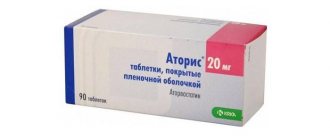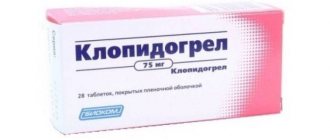Heavy and prolonged menstruation requires rapid diagnosis and treatment. Hemostatic drugs, which must be taken under the supervision of a doctor, cope well with this problem. Compliance with the instructions for using Tranexam during menstruation, as well as the recommendations of the gynecologist, is mandatory.
The drug "Tranexam": application, description, composition
The task of the medical product is to cope with active blood production and minimize further discharge and bleeding from the genital tract. Clinical and pharmacological classification Tranexam is a drug with antitumor and hemostatic effects. The drug is an inhibitor of fibrinolysis, which is the process of conversion of plasminogen to plasmin, which promotes serious blood production.
For the most part, Tranexam is used to stop uterine bleeding.
Will it help?
The manufacturer assures that the medication is safe and effective if you follow the instructions accompanying the Tranexam tablet. Reviews about the drug contain information about unwanted side effects that worried many patients, at the same time, the drug really reliably fights the main manifestations of the pathological condition, so its use is considered completely justified.
Under no circumstances should you prescribe Tranexam yourself. As can be seen from the responses of lovers of self-medication, such an experience always left negative impressions without any benefit to the body.
Pharmacodynamics and pharmacokinetics
The main active ingredient is tranexamic acid, which relieves swelling and reduces blood discharge (systemic and local effect). During the action of the drug, cells and bodies that provoke the appearance of allergies and inflammatory processes, both internal and external, are actively suppressed.
In addition, tranexam is an excellent analgesic. However, it may also provoke the analgesic activity of opiates.
How does the drug work inside the body? There is an average absorption, insignificant connection with plasma proteins. Tranexamic acid is distributed throughout all tissues, evenly penetrating the placenta (during pregnancy), and even appears in breast milk.
The drug tends to accumulate in breast milk
In small quantities, the drug can be found in a man’s sperm – it can reduce fibrinolytic activity, but no effect on the movement and condition of sperm has been detected.
If we take into account the hourly aspect of the preservation of the concentration of the antifibrinolytic, then in the internal tissues of the body this indicator is about 17 hours, in the blood plasma - up to 8. To a small extent, the drug is metabolized, and is excreted through the urine, after 12 hours after administration .
Possible alternatives: "Tugina"
If it is not possible to purchase Tranexam, you should consult a doctor to select an alternative option. Sometimes the doctor advises you to stop on the medicine “Tugina”. This remedy has a good effect on bleeding and an increased likelihood of bleeding. You can use the remedy if angioedema has been diagnosed since birth. The substance allows you to control the activity of plasmin, thereby minimizing the risk of complications and relapses.
The medicine "Tugina" is intended for intravenous administration. The dosage is chosen based on body weight - 10 mg/kg. The highest concentration in the blood serum is achieved just one hour after the procedure. After another hour, a third of the resulting product is eliminated in urine. A day after the drug enters the body, more than 90% of the active compound is eliminated. A cumulative effect is observed in organic tissues. The ability to penetrate the blood-brain and placental barriers has been revealed. In the milk secreted by the mother's glands, the substance is observed in a concentration of about 1% of that characteristic of blood plasma. No teratogenic effect was detected. The volume of distribution is estimated at 9-12 liters, the ability to form strong bonds with whey proteins is no more than 3%.
Indications for use
The main reasons why the patient is prescribed this method of treatment are various bleedings that can occur for various reasons:
- the occurrence of bleeding of various complications and causes: from the nose, genital tract, intestines or teeth;
- various manifestations of allergies, skin diseases;
- neurotic edema, which has genetic causes;
- complications of the liver, surgery on the chest, ribs or gastrointestinal tract;
- problems during pregnancy, bloody discharge;
- state of shock;
- frequent stress;
- blood poisoning, sepsis;
- surgical intervention on the genitourinary system;
- oral infections;
- peritonitis or gestosis.
How quickly does it stop bleeding?
When taking the drug orally, no more than 50% of the dose taken enters the systemic circulation, and the maximum concentration of the active component in the plasma is achieved within 3 hours. The effectiveness and speed of action of the drug depends on the cause of hemorrhage, the individual characteristics of the body and a number of other factors. Tranexam is considered one of the best hemostatic agents, but you should not expect an immediate effect. Thanks to its action, bleeding stops gradually, on average it takes from 3 to 7 days. The process may take a long time.
Important information: How to stop heavy bleeding after leeches and how long (why) does the bleeding last after a bite?
Medicine does not always help. It may not give the desired result at all or may slightly reduce blood loss rather than stop it completely. However, you should not increase the dosage without permission or extend the treatment course.
Contraindications
The drug should not be taken when the patient has serious problems with sensitivity to the active component, or the bleeding is subarachnoid in nature. It is used very carefully for blockage of blood vessels, problems with vision (color), hematuria of the upper sections of the genitourinary system, as well as serious problems with the kidneys.
Nosebleeds may also require treatment with Tranexam
Is it possible or not?
It is strictly forbidden to take Tranexam tablets if you are hypersensitive to any substance used in the manufacture of the medicine. Tranexam is not prescribed if the hemorrhage is localized in the subarachnoid space.
Tranexam is used extremely carefully, only if it is possible to constantly monitor the patient’s condition, against the background of thrombosis. Particular risks are associated with heart attack and blood clots in the brain. The same attitude is required by the increased risk of blood clots and complications of a similar nature. It is necessary to combine Tranexam with extreme caution and heparin drugs, drugs that do not directly affect blood clotting. Careful use is required: problems with color perception, hematuria, kidney failure. The latter is associated with the danger of a cumulative effect.
There is an increased risk of blood clots if Tranexam is used simultaneously with hemostatic medications, hemocoagulase.
Side effects
What side effects can occur with long-term or short-term use of this medicine? The patient should beware of: nausea and vomiting, indigestion and intestinal pain, allergic local manifestations on the skin - the dermis itches and itches.
There may be dizziness and a desire to sleep. Thromboembolism is a fairly rare but possible symptom with long-term use. If a person drives a car, he needs to give it up for a while; blurred vision and incorrect perception of colors are possible.
If an intravenous injection was given, shortness of breath and chest pain are faithful companions, along with allergies and rapid heart rate.
Interaction with other drugs
It is not recommended to prescribe Tranexam together with other drugs that stimulate the blood coagulation system or block the activity of fibrinolysin. In this situation, the likelihood of thrombosis sharply increases.
Tranexam should not be prescribed simultaneously with anticoagulating and antiplatelet drugs, some antibiotics, and tranquilizers. The following medications are incompatible with Tranexam:
- Heparin;
- Warfarin;
- Chime;
- Sibazon;
- aspirin;
- benzylpenicillin sodium salt;
- tetracycline drugs.
Instructions for use of Tranexam (Method and dosage)
Tranexam tablets are recommended to be taken orally. The frequency of administration is prescribed individually, based on the patient’s problem; prescriptions according to the standard regimen are not excluded (for example, fibryolysis is treated at a dosage of 1000 - 1500 mg up to 3 times a day). Surgery on the cervix (conization) requires a dosage of 1500 mg, taken 3 times a day, for a course of treatment of 2 weeks.
The solution for intravenous injection can be administered either in a syringe or in a dropper. Each individual case of treatment requires its own dosage and course of taking the drug. It often happens that the doctor has to adjust the course and amount already during the appointment.
The drug solution can be administered through a dropper
Tranexam during pregnancy and lactation
It is necessary to use this potent substance especially carefully during pregnancy and before childbirth. According to reviews from expectant mothers, the drug did not cause discomfort and did not harm the fetus. However, doctors advise taking the substance with caution - the acid easily penetrates the placenta and collects in the milk of a nursing mother. It is recommended to take it for a week, 3 pieces per day.
Tranexam during menstruation
When is it necessary and important to take pills during menstruation? Only an obstetrician-gynecologist can definitely answer this question. But the instructions for use clearly indicate that if menstruation is characterized by excessive bleeding or pain in the lower abdomen, you can start a course of medication.
Why is this so important? Because it is menstrual cycle disorders that can cause various diseases of the genitourinary system, leading to serious inflammation and women’s health problems. The medication course is 5–6 days, three tablets per day.
https://www.youtube.com/watch?v=dKjLyAWdoUY
Tranexam for uterine bleeding
Before starting a course of treatment, it is recommended to consult with your doctor - you never know what caused these problems. The cause of pain and bleeding can be very different: from inflammation to ectopic pregnancy and serious disorders of the genitourinary system. Often the root of the problem lies in a lack of iron - against the background of the development of anemia.
For impaired renal function
In this case, a clear dosage developed by the attending physician is important.
When will it help?
When prescribing the drug, the doctor will definitely tell you why Tranexam tablets help and how to use them so as not to harm yourself. The main indication for prescribing the composition is bleeding or an increased likelihood of its formation if fibrinolysis is activated, and the systemic effect covers the entire body. Often this type of bleeding occurs during and shortly after surgery, as well as shortly after childbirth. There are risks associated with manual removal of the placenta and bleeding that appears during gestation.
"Tranexam" is prescribed for hemophilia and chorionic detachment. The drug is indicated for oncological diseases localized in the pancreas and prostate gland. The basis for the prescription is a complication of the course affecting fibrinolysis. The medicine is used for purpura, leukemia, a number of liver diseases and against the background of the use of streptokinase.
From the instructions describing what Tranexam tablets help most effectively, it follows that the drug can be used for angioedema caused by hereditary factors. Sometimes the drug is prescribed as part of a comprehensive course of treatment for eczema, dermatitis, rashes caused by medications or toxic compounds. The drug is indicated in the treatment of urticaria and a number of other allergic reactions.
Reviews about Tranexam
The most common reason for using the drug is uterine bleeding for various reasons and pathologies. Women who have ever used this drug actively share their experiences on women's forums, websites and blogs, leaving a variety of reviews.
If you believe the statistics, this remedy helps get rid of the serious problem of bleeding quickly and without problems, regardless of the dynamics of the disease. As for the form of the drug - tablets or intravenous solution - the treatment method in this case is selected individually, based on the problem.
One of the patients was diagnosed with uterine abruption, after which heavy bleeding began. Complex treatment with Tranexam and Duphaston soon yielded positive results: my health improved significantly, and the discharge stopped.
Diseases of the female reproductive system characterized by bleeding are often treated with Tranexam
Be careful, but Tranexam is used even during pregnancy at different stages. During menstruation, the medicine is used for heavy and painful discharge. What is characteristic is that the drug is not addictive.
Doctors warn that you should not self-medicate when bleeding; you should urgently seek help from a doctor!
And most importantly, it is important to remember that Tranexam will not work if the treatment for the problem is not prescribed correctly - the discharge of blood depends on the source of the disease, which must be treated first.
general information
The use of Tranexam tablets is indicated if there is a need to stop the activity of plasminogen and inhibit the reaction of transformation of the substance into fibrinolysin. The drug in question is available not only in tablet form, but also in a solution for injection. The drug has a systemic pronounced hemostatic effect. It is recommended to use the medication if the patient has bleeding due to an increase in the concentration of fibrinolysis. This is often diagnosed in menorrhagia, observed in a pathological condition affecting platelets.
Tranexam tablets are used for bleeding if the patient’s condition allows oral administration of medications. One capsule contains a quarter of a gram of the active ingredient. The medicine is available in packages containing from 10 to 50 capsules. Each copy is coated, making it easier to use the composition.
How many days can you drink
The duration of taking the medication is determined by the doctor individually based on the available indications. Thus, for menorrhagia, the course of treatment should not exceed 4 days, for recurrent nasal bleeding it is 1 week, in the postoperative period it is extended until the hemorrhagic manifestations completely disappear (12-14 days), and to prevent exacerbations in hereditary angioedema it can be taken on an ongoing basis.
Indications for early discontinuation of the drug are overdose and the development of adverse symptoms.








